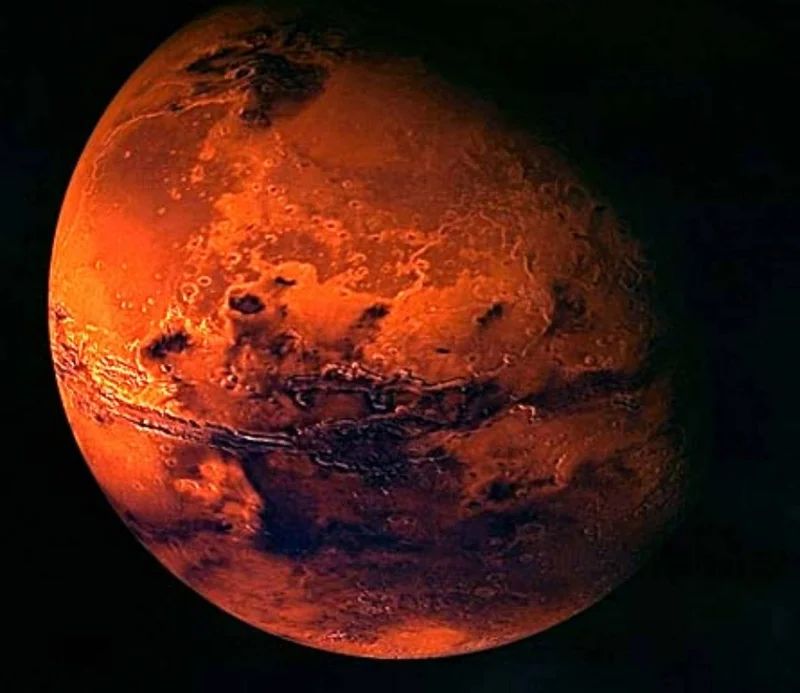The Real Reason NASA's Mars Rover Just Found a "Visitor From Outer Space"
Okay, folks, buckle up, because this isn’t just about a shiny rock on Mars. This is about unlocking the secrets of the solar system, one cosmic collision at a time. NASA's Perseverance rover, after four years of tireless exploration, has stumbled upon something truly special: a meteorite, possibly forged in the heart of an ancient asteroid, sitting pretty on the Martian surface. They're calling it "Phippsaksla"—try saying that five times fast!—and it's got everyone buzzing.
Now, I know what some of you might be thinking: "Another rock? Big deal." But trust me, this is HUGE. This isn't just about geology; it’s about planetary archaeology, about piecing together the violent, beautiful history of our cosmic neighborhood.
The initial reports are fascinating. The rock stood out, they said, from the surrounding terrain. Tests revealed high levels of iron and nickel, the same elements found in meteorites that have crashed onto both Mars and Earth. The rover used its SuperCam instrument's lasers and spectrometers (measuring light wavelengths) to analyze Phippsaksla's chemistry, providing a clear measure of its iron and nickel content. This is like finding a perfectly preserved artifact from a bygone era, except instead of a dusty old pot, it’s a chunk of space rock that’s traveled millions of miles.
Here's the thing: meteorites are like time capsules. They’re remnants of the early solar system, offering clues about the materials that formed the planets, the asteroids, and everything in between. Finding one on Mars, especially one with this kind of composition, is like stumbling upon a Rosetta Stone for planetary science.
But here's where it gets even more exciting. This meteorite, because it sits atop impact-formed bedrock outside Jezero crater, NASA scientists said its location could offer clues about how the rock formed and how it ended up there. That means we can start to understand how these cosmic collisions have shaped the Martian landscape and, potentially, influenced its habitability over billions of years.
The implications are mind-boggling. Did meteorites like Phippsaksla deliver essential ingredients for life to Mars billions of years ago? Could they have played a role in seeding the planet with water or organic molecules? These are the kinds of questions that keep scientists up at night, and this little rock could hold some of the answers.

This find also underscores the importance of Perseverance’s mission. It's not just a rover; it's a mobile laboratory, equipped with the tools to analyze, sample, and document the Martian environment in unprecedented detail. And, crucially, it's collecting samples that could one day be returned to Earth for even more detailed study.
Of course, the Mars Sample Return mission is currently facing some serious challenges, as the Trump administration has proposed canceling the return portion of the endeavor, deeming it “financially unstable.” But let's be clear: abandoning this mission would be a colossal mistake. We've come too far, invested too much, and stand to gain too much to simply walk away now. It would be like buying a winning lottery ticket and then throwing it in the trash! NASA’s Mars Sample Return Mission in Jeopardy as U.S. Considers Abandoning Retrieval
Think about it: scientists could check for material left behind by decayed microbes, for instance, or an imbalance in two key forms of carbon, carbon-12 and carbon-13. "If you have a dead log [on Earth] with some kind of dead plant matter, you will see a lot of carbon-12,” Bosak says. Other evidence of life could include microfossils, physical shapes in the rocks themselves that might be the fossilized remains of ancient critters. “There should be some organic compounds or minerals present that we know are good at preserving microbial shapes,” she says.
Imagine what we could learn from these samples! We could unlock the secrets of Martian geology, understand the planet's climate history, and, yes, even search for signs of past or present life. This isn't just about Mars; it's about understanding the potential for life elsewhere in the universe.
The discovery also highlights the importance of international collaboration in space exploration. The European Space Agency is a key partner in the Mars Sample Return mission, and other countries, like China, are also pursuing their own Mars exploration programs. By working together, sharing data, and pooling resources, we can accelerate the pace of discovery and achieve even more ambitious goals.
Now, I know some people worry about the ethical implications of exploring other planets. Should we be disturbing these pristine environments? Do we have the right to extract resources from other worlds? These are important questions, and we need to address them thoughtfully and responsibly. But I believe that the potential benefits of space exploration—the knowledge we gain, the technologies we develop, the inspiration it provides—far outweigh the risks.
And speaking of inspiration, I've been following some of the discussions online about the Phippsaksla discovery, and it's been amazing to see the excitement and curiosity it's generated. As one Redditor put it: “This is what it's all about! Discovering the unknown, pushing the boundaries of human knowledge, and reminding ourselves that there's so much more out there to explore.” I couldn't agree more.
I think this is the beginning of a new chapter in our understanding of Mars. It's a reminder that even after decades of exploration, there are still surprises waiting to be discovered. And it's a testament to the power of human curiosity and ingenuity to unlock the secrets of the cosmos.